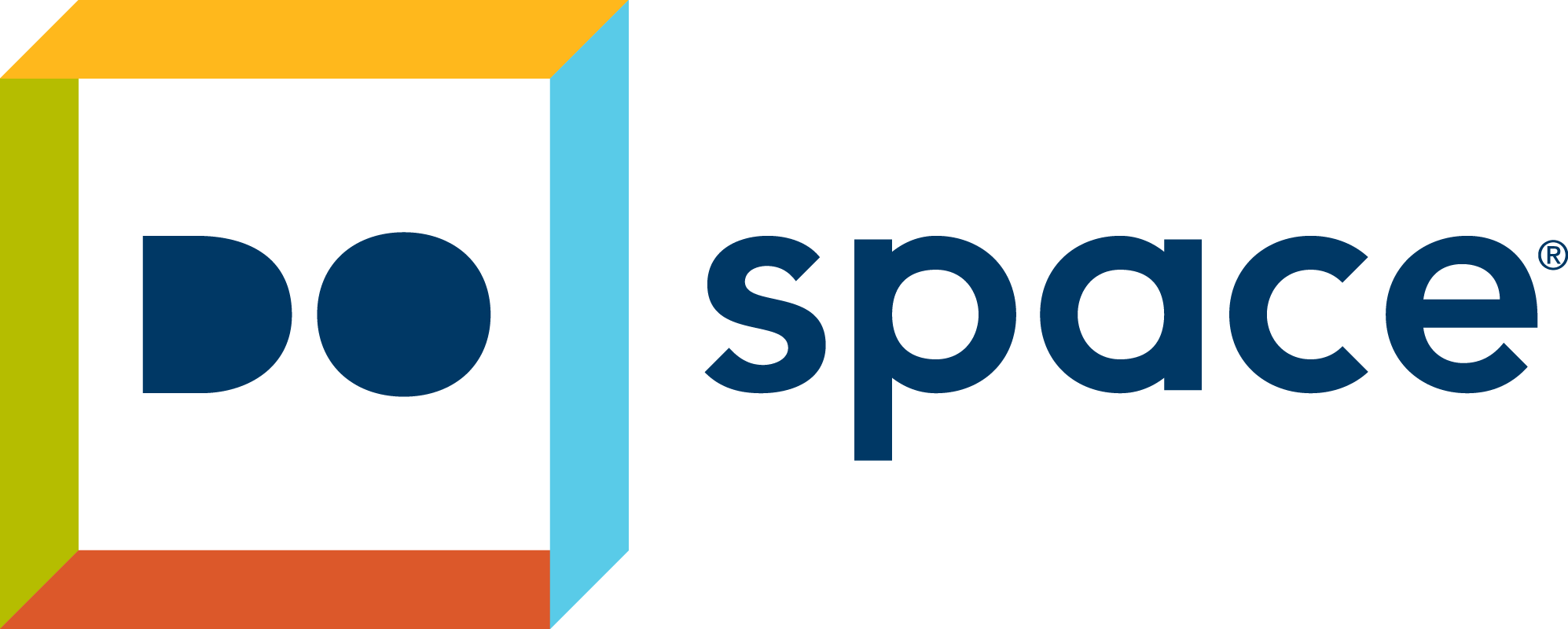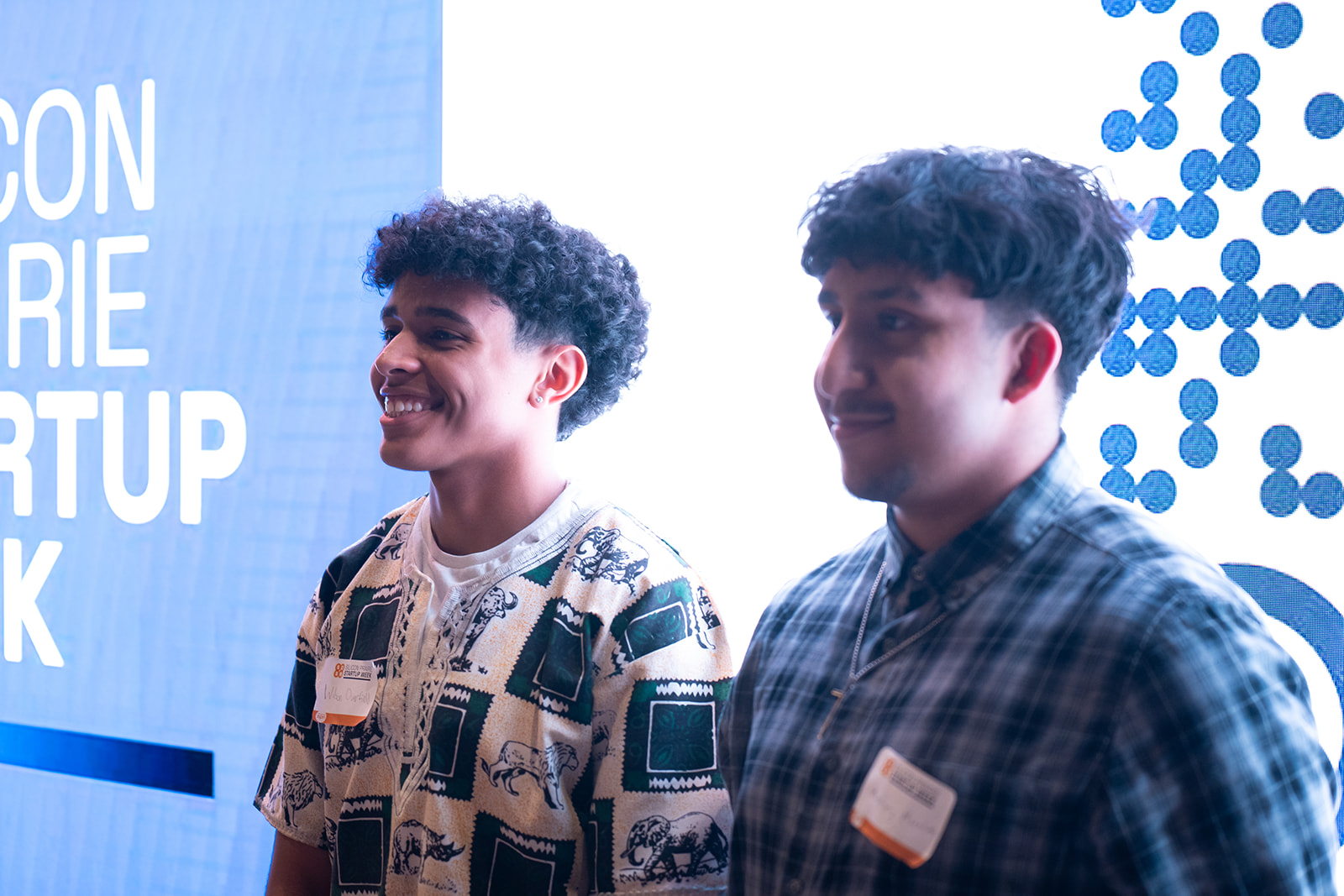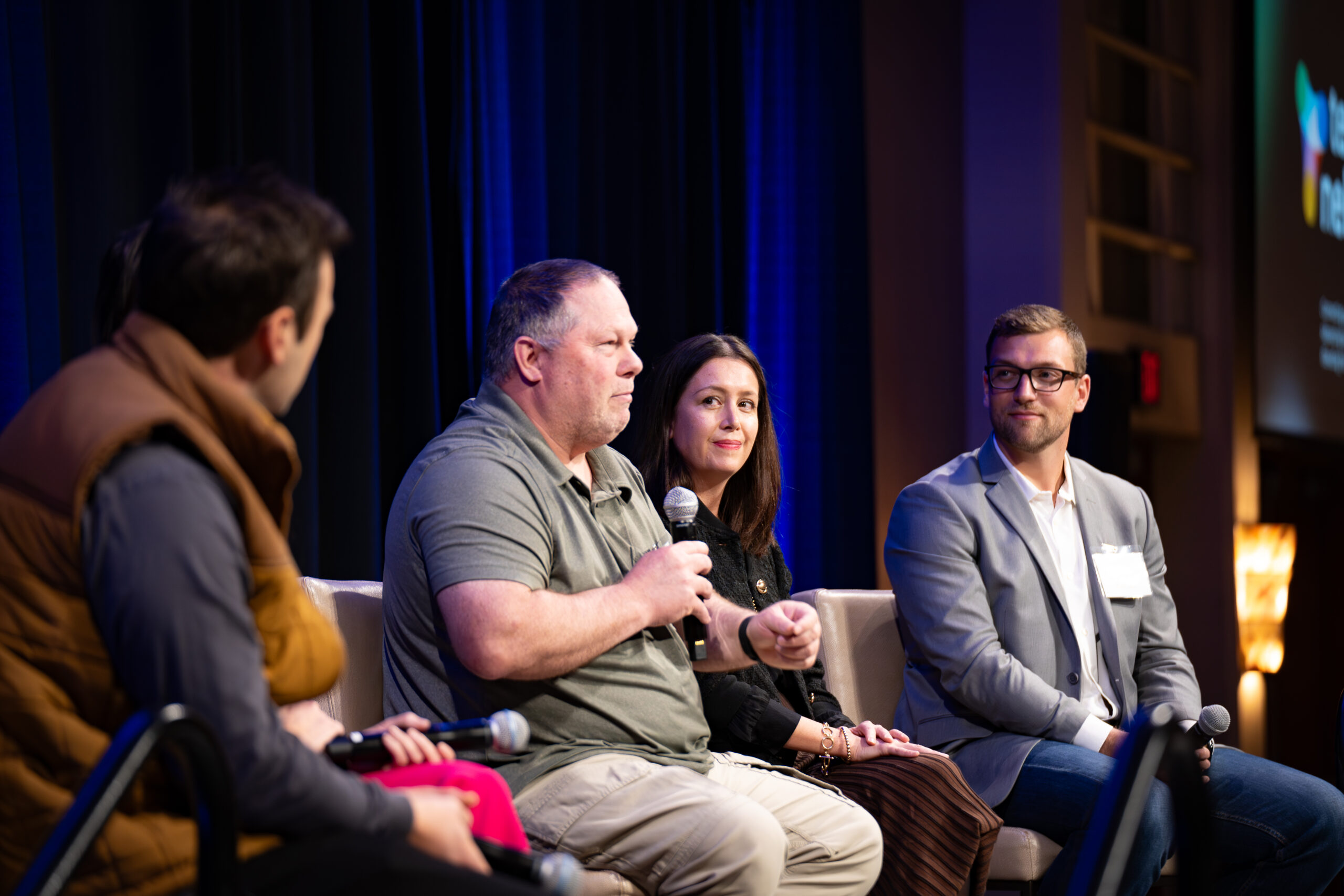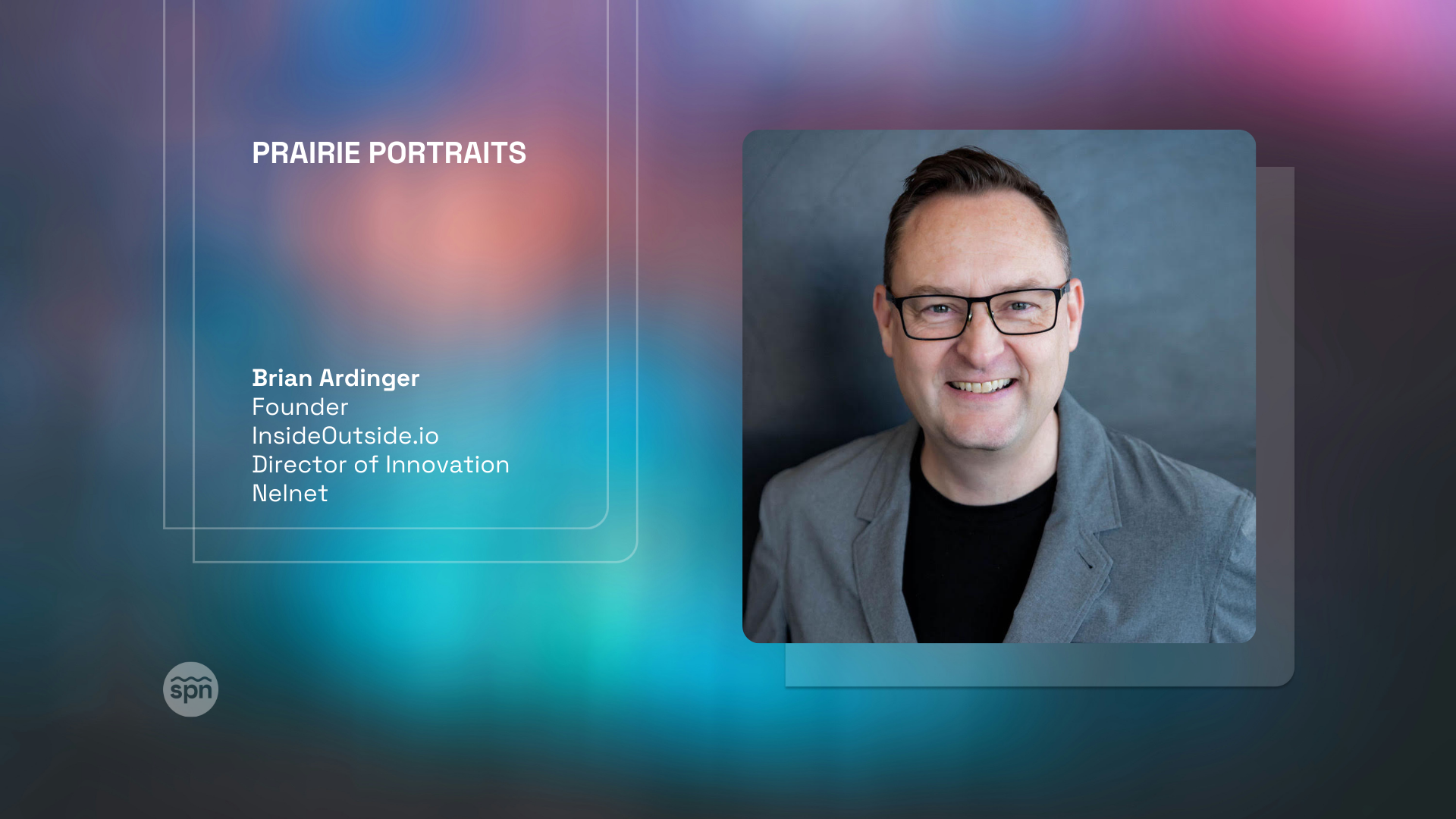Note: The following live blog has been edited following the event. Changes include addition of pictures, spelling and grammar and order of updates, which were originally posted most recent to oldest.
8:03 a.m. Welcome to Day 2 of Big Omaha. After an educational, enjoyable, and inspirational day of speakers, parties, and connecting yesterday, we’re getting set to jump into another shared experience with the likes of Dennis Crowley (foursquare), Melody McCloskey (StyleSeat) and Tony Hsieh (Zappos).
I’m the duly appointed live blogger for today so if you’re not in the room, feel free to check back here throughout the day or follow the Twitter stream at #BigOmaha.
8:23 Another live blog that I’m enjoying for Big Omaha is Andrew Mager over at ZDNet. Andrew is a real pro and is inserting photos and videos in close to real-time, check it out: The Web Life
8:47 Doors just opened to the main room at KANEKO and people are flooding in.
9:03 It looks like we’ll be starting a bit late this morning but we have two solid DJs keeping us entertained. Last night was quite an experience with the Big Party at Nomad Lounge and then an after party at the Magnolia Hotel – it may account for some stragglers.
Photo by Malone & Company Photography
9:07 One of the interesting things about Big Omaha is that it’s a single-track event. As someone said, at SXSW in order to attend one session you literally have to pass on 20-plus others. Here, everyone has the same shared experience and it’s interesting to look out at the crowd and see the speakers participate as attendees, too. I just had the chance to chat briefly with David Hauser (Grasshopper), yesterday’s opening speaker. I’m going to try and get some time with him at the break to talk about his experiences here in Omaha.
9:13 Event co-founders Jeff Slobotski & Dusty Davidson take the stage to kick off Day 2! Dusty, as per the norm, lost his voice in the excitement. Dusty announced that the community has raised at least enough to fund another charity: water well, new t-shirts have arrived and Scott Belsky‘s (Behance) book Making Ideas Happen is sold out at the book store.
9:16 Jay Wilkinson of the Nebraska Angels investment group takes the stage to welcome us to Day 2 and introduce us to Dennis Crowley of foursquare. Jay leads the crowd in a drum roll, adding to David Hauser’s “welcome the speakers challenge” of yesterday. Jay encourages us all to check in on foursquare as an additional welcome for Dennis.
Photo by Malone & Company Photography
9:20 Dennis notes that it’s first time in Nebraska and he tweeted a joke that it’s his first time in a flyover state. The crowd laughed.
Quote of the moment:
Thanks for checking in on foursquare; every check in saves a kitten.
Photo by Malone & Company Photography
9:25 Dennis has 100-plus slides for 30 minutes and he seems determined to get them all in! His first job was creating slides for a research group and he hated it. He started a side project which lead to him getting hired by a development firm that created apps for the Palm Pilot.
9:27 At 25 years old Dennis was laid off in a terrible job market in New York City following 9/11. He did anything and everything he could do to wait out the job market and finally decided on graduate school in New York University’s Interactive Telecommunications Program. In 2004, he and classmates created Dodgeball as a social way to explore NYC.
Quote of the moment:
It was weird but it was just an experiment, who cares?
Photo by Malone & Company Photography
9:37 Dodgeball evolved into a real job, was acquired by Google, then crushed. He explored several other opportunities but was in a dark place. He turned back to his original inspiration: social exploration, turning real life into a gaming opportunity and eventually foursquare was born as a culmination of 10 years of disconnected efforts.
9:41 Quote of the moment:
Every day should feel like the Legend of Zelda. What’s your boomerang for the day?
9:45 Much of foursquare’s evolution is from the original NYU thesis project. However, more than ever the users are dictating the growth of the project. It was originally built to be used in bars in NYC but now parents are using at the playground to arrange play dates.
9:48 Quote of the moment:
At times I’m embarrassed by the project; it’s only 10% of where it needs to be.
9:50 Question from the floor: “This may be inappropriate, but how do you make money?” Dennis said they took financing dollars to buy them time to figure out the revenue model. They are now working with partners like NBC and Bravo!. Future revenue will come from providing dashboard-like data insights to businesses based on checkins. “Think Google Analytics for local merchants.” He said they don’t have it all figured out, “foursquare is still an experiment.”
Photo by Malone & Company Photography
9:53 Question about competition in the location space. Dennis said the team and their investors keep an eye on everyone – “I always get notes like ‘did you see there’s now a foursquare for …’” – but are most attuned to what’s going on with Twitter and Facebook as “the big guys.”
9:58 Emcee Rachelle Hruska is back to introduce our next speaker: Melody McCloskey of StyleSeat.
10:00 Melody is introducing her company, StyleSeat, a management platform for small businesses in health, beauty, and wellness fields. She considers herself the little fish an entrepreneurial world of sharks.
10:03 What Melody has learned through her experience, first: “Know your motivation – why are you in the game?”
Photo by Malone & Company Photography
10:12 Melody’s talking points:
- “Know your motivation – why are you in the game?”
- “People are everything.” She says these are obvious things but also essential and often forgotten.
- “Credibility, honesty, trust”
- “Let go of your fear”
- “What’s your worst case scenario?”
- “Really, really suck (because you will).”
- (paraphrased) Doing something poorly is better than doing nothing
- “If you go down in flames, may they be glorious.”
Photo by Malone & Company Photography
10:17 “If you’re not in San Francisco, Boulder or New York MOVE.” This one’s not going to be real popular in this room and Melody knows it. This goes against the Silicon Prairie News‘ philosophy of “you can build a startup community where you live.” I respect her opinion but it should be our challenge, as entrepreneurs in the Midwest, to prove her wrong.
10:19 I just checked the #BigOmaha Twitter stream and, as expected, folks weren’t real pleased with her MOVE suggestion. That comment really took the air out of the room.
10:27 Melody just wrapped up; if you’re interested in her presentation it’s at http://www.styleseat.com/bigomaha.
10:32 Rachelle is introducing the panel amidst a murmur of discussion in the room following Melody’s presentation. David Hauser (Grasshopper) is moderating with panelists Justin Shaffer (Hot Potato), Alexa Andrzejewski (Foodspotting) and Matt Galligan (SimpleGeo).
Photo by Malone & Company Photography
10:33 David hits it right away asking the follow up from Melody’s MOVE. How important is location? Matt notes that the panel is from Boulder, San Francisco and New York. This should be interesting.
Photo by Malone & Company Photography
10:36 Matt (Boulder) notes the need for community wherever – be it “Tier A, Tier B, or even Tier C.” Justin (NYC) notes that it’s about communication and the internet enables that wherever you are. However, the SF network of tech doers is helpful. Alexa (SF) says there’s an advantage to living in SF but that doesn’t mean it can’t happen anywhere.
The big takeaway is about community – you need a support system for what you’re doing, whether that’s for access to investment or just to commiserate. Some places are better than others for certain industries but I don’t think that needs to be a barrier.
Photo by Malone & Company Photography
10:44 Continued discussion about the competitive nature of these communities. David asks, “Are these communities so insular that it’s damaging?” Matt notes that it can be over whelming when you have a tech event every night of the week. Justin notes that visiting one of these communities can be inspirational and you can bring that energy back to your location (in his case, bringing SF ideas to NYC). Alexa said SF is quite siloed by specialty, e.g. graphic artists from engineers.
Photo by Malone & Company Photography
10:51 David asks about the focus on game theory and game mechanics within new ventures. Matt has lots of thoughts about the emotional drive of game mechanics and the incentives in that for choice in consumer behavior. Alexa notes that you should think about people’s core desires – Why they are motivated to earn points? – as well as their actions and how you can use that to persuade.
Photo by Malone & Company Photography
11:11 Questions from the floor: “Can’t we build the community that we want, where we want? How do you recruit rock stars?”
11:16 Talk moves to remote teams and distributed workforce. Matt says that it’s important to integrate the culture as much as possible across offices (even digitally). Justin says they’re not distributed, yet.
11:29 Final question from the floor is by the founder of NetShops (now Hayneedle), a massive online retailer based here in Omaha that has proven you can do it here: raise money, attract and build top talent, and ultimately be a successful entrepreneur. Now for the break.
11:49 Tried to grab some coffee but it looks like we’re out! Made it back to my PC just in time to see Tony Hsieh (Zappos) introduced for the final presentation of Big Omaha 2010.
11:53 Tony is giving his background, started in college in the mid-90s with a pizza business. Moved into online advertising in 1996, sold the company to Microsoft for $265 million in 1998. Why did he sell the company? Because the culture had eroded and it wasn’t the same place. Zappos since 1999, first joined as investor then became CEO. Zappos was acquired by Amazon in November 2009. Amazon held true to their word and left Zappos intact just with a different Board of Directors.
Photo by Malone & Company Photography
11:56 Zappos is all about customer service. One day Tony hopes people won’t remember they once sold shoes because they can be successful simply providing stellar customer services in a multitude of industries.
11:58 Quote of the moment:
The telephone is one of the best branding devices out there; you have your customers full attention for 5-10 minutes. If you do it well, your customers will evangelize.
On the Zappos call center strategy: “We don’t have scripts, we don’t have call times, we don’t upsell.”
Photo by Malone & Company Photography
12:01 Quote of the moment:
“Our longest call was over six hours – not sure how the bathroom situation worked on that one.”
12:03 Company culture is Zappos’ number one priority. If you do that right everything else gets taken care of. Every employee goes through the same five week call center training which includes two weeks of answering the phones (not just the call center employees).
At the end of week 1, every employee gets an offer of $2,000 to quit. They don’t want people who are just there for a paycheck. No one took the offer last year.
12:07 All employees get trained on how to use Twitter. They get to choose if they want to use it following the training. 500 employees use it regularly and the company has an index of all involved. It helps to connect the team and build the culture.
12:10 Zappos has figured out that their company’s core purpose is “delivering happiness” they just happen to do that through clothing at the moment. Tribal Leadership and Good to Great are popular books within the company.
They have defined ten “committable” core values for the company. They hire and fire based on these. One of which is “be humble” which trips them up the most. The interview starts with the shuttle driver picks you up at the airport. How the interviewee treats the shuttle driver often indicates their humility.
Photo by Malone & Company Photography
12:19 Commitment to transparency: Zappos live streams company meetings that include financial information, has a newsletter where employees can ask anything (that will be answered), allows reporters to walk freely through the company and talk with any employee they encounter.
12:23 Advice to entrepreneurs: “Instead of thinking about money for motivation think about what you’ll be passionate about doing for the next 10 years and use that for motivation…chase the vision not the money”
12:25 Zappos evolving vision: 1999: Selection –> Customer Service –> Culture and core values as our platform –> Personal Emotional Connection –> 2009: Delivering Happiness.
12:35 Tony is “killing it” with an anecdote involving pepperoni pizza, a hotel with no room service at 3 a.m., and the commitment of the Zappos team to serving that customer.
12:43 PM: Tony closes with the challenge of asking everyone about their goal in life. If you ask someone “why?” they have that goal enough times almost all people will eventually arrive at a core desire for “happiness.” Why not do things that derive happiness in your life and business now and skip the in between stuff?
Photo by Malone & Company Photography
12:50 Tony invites everyone to send him a note for a copy of his presentation and a free book on culture inside the company. Also, next time your in Las Vegas go to tours.zappos.com and see their operation up close.
12:57 Jeff & Dusty take the stage to close out Big Omaha 2010. Thank you to the DJs, KANEKO staff, the volunteers, our emcee Rachelle, the BrightMix and Silicon Prairie News team, the spouses of the team involved, all the speakers and everyone else for attending.
See you at Big Omaha 2011!



















